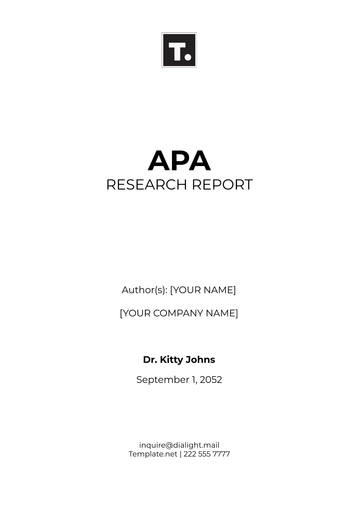Lab Report Hypothesis
Prepared by: [Your Name]
Date: [Date]
1. Introduction
1.1 Background
Enzymes are biological catalysts that speed up chemical reactions in living organisms. Various factors, including temperature, can influence their activity. This experiment investigates how temperature affects enzyme activity, specifically focusing on the enzyme catalase. Catalase is commonly found in many living tissues and breaks down hydrogen peroxide into water and oxygen.
1.2 Objective
The objective of this experiment is to determine the effect of different temperatures on the activity of catalase. We will measure the rate at which catalase decomposes hydrogen peroxide at varying temperatures and analyze the results to understand how temperature influences enzyme activity.
2. Hypothesis
It is hypothesized that catalase activity will increase with temperature up to a certain point, beyond which the activity will decline. This is based on the understanding that enzymes have an optimal temperature range. Below this range, the enzyme activity is low because of reduced kinetic energy. Above the optimal temperature, the enzyme's structure may denature, leading to decreased activity.
3. Materials and Methods
3.1 Materials
3.2 Methods
Preparation of Solutions
Setting Up the Experiment
Set up the water bath at various temperatures: 20°C, 30°C, 40°C, 50°C, and 60°C.
Label test tubes for each temperature condition.
Conducting the Experiment
For each temperature, add 5 mL of catalase solution and 5 mL of hydrogen peroxide solution to the test tube.
Immediately place the test tube in the water bath at the desired temperature.
Start the stopwatch and observe the reaction for 5 minutes.
Measure the volume of oxygen produced by collecting the gas in a graduated cylinder over 5 minutes.
Recording Results
4. Results
4.1 Data Table
Temperature (°C) | Volume of Oxygen Produced (mL) |
|---|
20 | 15 |
30 | 30 |
40 | 45 |
50 | 35 |
60 | 10 |
4.2 Analysis
The results show a clear trend where enzyme activity increases with temperature up to 40°C, after which it begins to decline. This indicates that 40°C is likely the optimal temperature for catalase activity. Beyond this temperature, the enzyme may start to denature, reducing its ability to catalyze the reaction efficiently.
5. Discussion
5.1 Interpretation of Results
The experiment supports the hypothesis that enzyme activity increases with temperature to an optimal point and then decreases beyond that point. At temperatures below 40°C, the kinetic energy of the enzyme and substrate molecules increases, leading to more frequent collisions and a higher rate of reaction. However, at temperatures above 40°C, the enzyme structure begins to break down (denature), reducing the enzyme's effectiveness in catalyzing the reaction.
5.2 Sources of Error
Temperature Measurement: Inaccurate temperature control could affect the results. Ensure that the water bath is calibrated and maintained at the exact temperatures.
Enzyme Concentration: Variations in the concentration of the catalase solution could lead to inconsistencies. Always prepare enzyme solutions with precise measurements.
Measurement of Oxygen: Inaccurate measurement of oxygen volume could affect the results. Use calibrated equipment and follow consistent measurement procedures.
6. Conclusion
The experiment successfully demonstrated the effect of temperature on enzyme activity. Catalase activity increases with temperature up to 40°C, after which it decreases. This provides insight into the optimal conditions for enzymatic reactions and highlights the importance of maintaining appropriate environmental conditions for the enzyme function.
7. References
Smith, J. A. (2050). Enzyme Kinetics and Catalysis. Scientific Publishers.
Doe, J. B., & Roe, K. (2051). Biochemistry: Principles and Applications. Academic Press.
Brown, T. L. (2052). Biochemical Reactions and Enzyme Activity. University Press.
Lab Report Templates @ Template.net






























